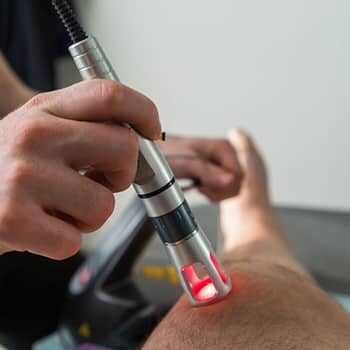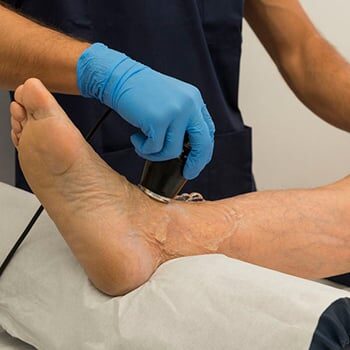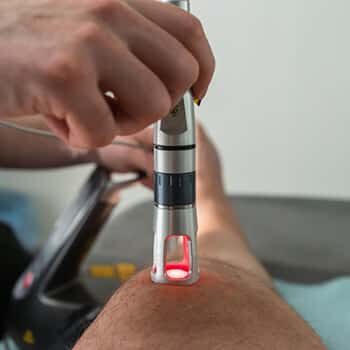
Cold Laser Therapy

History of Laser Therapy
Therapy Lasers have been monitored in the US by the FDA since the 1980’s and approved in 2002 Low Level Laser (LLL) and 2003 Class IV Lasers. They had been extensively studied in Europe for many years prior to the FDA approval. Low level lasers are near infrared light that work on the surface to decrease pain and inflammation and promote wound healing and surface tissue growth. Class IV Lasers are different because they have more power and can penetrate deeper into tissues. They also produce a deeper biostimulative effect than Low Level Lasers, while also producing similar effects as LL Lasers.
FDA Approved Indications for Class IV Laser Use:
- Relief of muscle and joint pain
- Increase in blood flow to region
- Relaxation of muscles and spasms
- Relief of pain and stiffness from arthritis


Therapeutic Effects:
Class IV Lasers function best in continuous waves, pulsed waves or combinations thereof. Pulsed are turned off and on multiple times a second, which reduces the energy by 50% and prevents the tissues from overly heating up or causing damage to tissues. Differing treatment frequencies used to produce certain physiologic effects have been identified in the literature:
Low frequencies to produce an analgesic effect (2-10 HZ)
- Biostimulation (500 HZ)
- Anti-inflammatory (2500 HZ)
- Anti-microbial (5000+ HZ)
One of the therapeutic effects of Laser therapy is to reduce pain and swelling. This anti-swelling effect is caused by vasodilatation of the local vessels and activation of the lymphatic drainage in the area being treated. Laser therapy helps cells heal and accelerates their cellular reproduction allowing the tissues to repair faster. This also reduces pain and decreases local nerve sensitivity. Lasers can also penetrate deeply into tissue providing energy to accelerate cellular reproduction and healing of cells, tendons, ligaments, muscles, and other tissues.
Additional Laser Therapy Effects:
Laser light therapy can also increase vasodilation, which brings more oxygen and healing to the tissues. This improved vascular activity also increases metabolic activity, increases ATP production, and aids in the overall healing process.
There have been studies suggesting laser light affects the cellular immunoregulation by stimulating immunoglobulins and lymphocyte activity. This results in an increase in wound healing activity through increased collagen production and stimulation of fibroblast activity.
Laser therapy can also reduce the excess formation of scar tissue from cuts, scratches, burns or surgery. Through the process of increasing cellular metabolism, Laser therapy significantly decreases the time of wound healing.
Laser therapy can also be used on joint or muscle trigger points in a way that provides non-invasive pain relief. Even damaged nerves can be slowly restored to decrease numbness and revive sensation in impaired limbs.


Relief
One of the most important effects of laser therapy is that it helps the body heal through dispersing the inflammation localized in the area. After a series of treatments, you should begin to feel less pain and swelling. The typical treatment protocol requires 3-6 treatments over a 2 to 4-week duration. If you are not feeling any improvement after 3 treatments, please inform our staff so that the doctor can assess your treatment protocol and make any necessary changes.
Patient Feedback:
Simple Steps to Cold Laser Therapy Treatment
2. Get Adjusted
Based on your circumstances, a specific treatment plan will be implemented to correct your spine.
